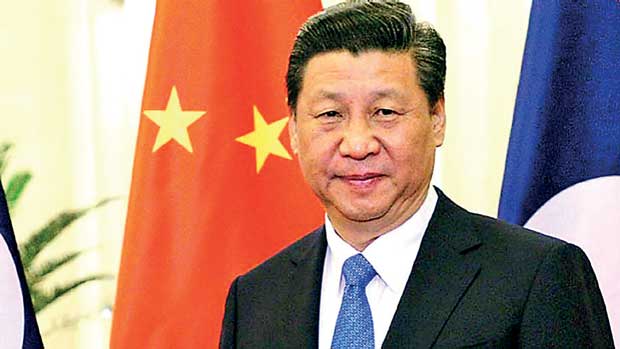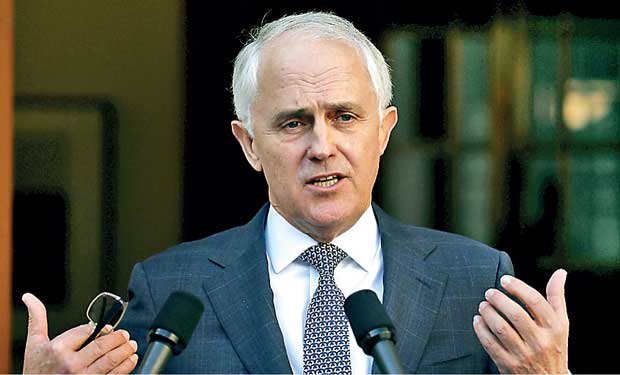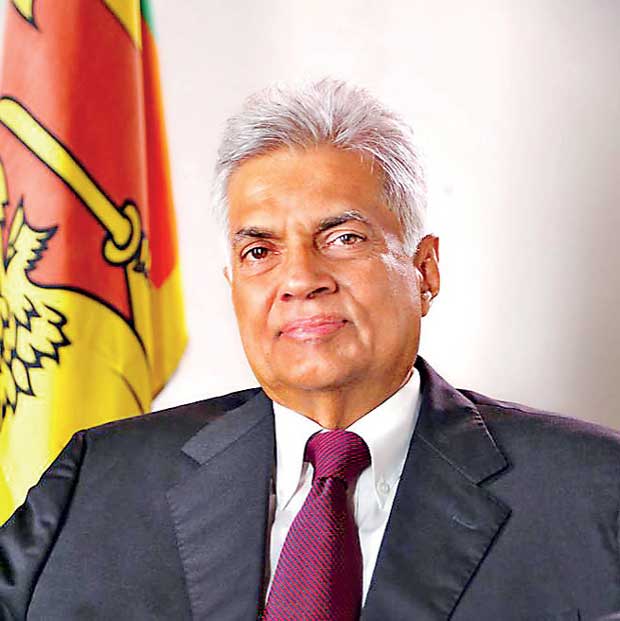Reply To:
Name - Reply Comment

Australian Prime Minister Malcolm Turnbull, in his address to the 16th Asia Security Summit, Shangri-La Dialogue on June 2, made reference to iconic Singaporean leader the late Lee Kuan Yew, who quoted the Chinese saying ‘Big fish eat small fish and small fish
eat shrimps’.
 Chinese President Xi Jinping
Chinese President Xi Jinping
By saying so, Lee Kuan Yew described Singapore, as the shrimp, could only survive by being unpalatable to the larger fish. The Australian Prime Minister said Singapore could make itself unpalatable to the larger fish, by being self –reliant and strong, as envisaged by Lee Kuan Yew.
All in all, Singapore made friends with other larger fish- strong alliances and collective security.
This reference and the strategy, adopted by the Singaporean leader and reminded of by the Australian Prime Minister, is well pertinent in today’s geopolitical context to Sri Lanka as it teams up with the Belt and Road initiative by China, in main , for its global trade expansion in the world .
Sri Lanka was among the first few countries that extended their cooperation to the Silk Route project undertaken by Chinese President Xi Jinping.
 Australian Prime Minister Malcolm Turnbull
Australian Prime Minister Malcolm Turnbull
That happened during the previous rule of Sri Lanka.
After the new Government came to office, there arose some form of diplomatic tension with China over the suspension of the Colombo Port City project. Nonetheless, the new Government, which developed a slant in its foreign policy towards the West and India, fell in line with the economic reality of the world and attempted to build its ties with China afresh.
 Prime Minister Ranil Wickremesinghe
Prime Minister Ranil Wickremesinghe
So to speak, the Government threw its weight behind the Belt and Road apart from the resumption of the Port City now named Colombo Financial City.
At the leaders’ roundtable of the Belt and Road Forum for International Cooperation held in Beijing last month, Sri Lanka was among the 29 countries that signed the joint declaration pledging support to the project.
Prime Minister Ranil Wickremesinghe represented Sri Lanka at the event and placed his signature on behalf of the country.
In the joint communique issued after the Forum, the countries concerned admitted that the world economy was undergoing ‘profound changes’. In a nutshell, the leaders acknowledged the fact that the world economy showed modest recovery, but downside risks remained.
“The growth of global trade and investment remains tempered, and the rules-based multilateral trading regime is yet to be strengthened. All countries, especially developing ones, still face common challenges of eradicating poverty, promoting inclusive and sustained economic growth, and achieving sustainable development,” the statement says.
It is no doubt that China is leading the world trade today. Its outbound investment is also on the rise. The countries, around the world, compete with each other for attraction of Chinese investment.
Alongside, in placing the signatures to this statement, the leaders, including Sri Lanka’s, noted that the Silk Road Economic Belt and the 21st Century Maritime Silk Road or the Belt and Road Initiative could create opportunities amidst challenges and changes.
“We welcome and support the Belt and Road Initiative to enhance connectivity between Asia and Europe, which is also open to other regions such as Africa and South America. By providing important opportunities for countries to deepen cooperation, it has achieved positive outcomes and has future potential to deliver more benefits as an important international initiative,” the statement says.
In Sri Lanka, China has already invested heavily in infrastructure. It now seeks to partner with Sri Lanka for the upgradation of the Hambantota Port under the Public Private Partnership model.
It has expressed interests in putting up industrial parks in Sri Lanka as its investment. All these are analyzed and looked in the light of China’s long term global economic project under the Belt and Road initiative.
It is an initiative built on the ancient Silk Route. In its action plan on the project, China describes that more than two millennia ago the ‘diligent and courageous people of Eurasia explored and opened up several routes of trade and cultural exchanges that linked the major civilizations of Asia, Europe and Africa, collectively called the Silk Road by later generations.
It says, “For thousands of years, the Silk Road Spirit “peace and co-operation, openness and inclusiveness, mutual learning and mutual benefit ” has been passed from generation to generation, promoted the progress of human civilization, and contributed greatly to the prosperity and development of the countries along the Silk Road. Symbolizing communication and cooperation between the East and the West, the Silk Road Spirit is a historic and cultural heritage shared by all countries around the world.
In fact, Chinese President Xi Jinping raised the initiative of jointly building the Silk Road Economic Belt and the 21st-Century Maritime Silk Road, commonly called ‘Belt and Road’ during his visit to the Central Asian region in 2013.
According the Action Plan, the Belt and Road run through the continents of Asia, Europe and Africa, connecting the vibrant East Asia economic circle at one end and developed European economic circle at the other, and encompassing countries with huge potential for economic development.
The Silk Road Economic Belt focuses on bringing together China, Central Asia, Russia and Europe (the Baltic); linking China with the Persian Gulf and the Mediterranean Sea through Central Asia and West Asia; and connecting China with Southeast Asia, South Asia and the Indian Ocean.
The 21st-Century Maritime Silk Road is designed to go from China’s coast to Europe through the South China Sea and the Indian Ocean in one route, and from China’s coast through the South China Sea to the South Pacific on the other.
On land, the Initiative will focus on jointly building a new Eurasian Land Bridge and developing China-Mongolia-Russia, China-Central Asia-West Asia and China-Indochina Peninsula economic corridors by taking advantage of international transport routes, relying on core cities along the Belt and Road and using key economic industrial parks as cooperation platforms.
At sea, the Initiative will focus on jointly building smooth, secure and efficient transport routes connecting major sea ports along the Belt and Road.
The China-Pakistan Economic Corridor and the Bangladesh-China-India-Myanmar Economic Corridor are closely related to the Belt and Road Initiative, and therefore require closer cooperation and greater progress.
Sri Lanka well under the radar of Belt and Road Initiative
It is amply clear that Sri Lanka is ideally located in the Indian Ocean, not to be missed by the Belt and Road project. The strategic importance of this location has been realised by many countries in the world. As such, there is competition among the world powers to stamp their interests in Sri Lanka for geopolitical reasons. On the one hand, China is keen on investment in the port and the airport in the southern part of the country. On the other hand, India is assertive in the expression of its interest for investment in the eastern part of the country, integrated with the Trincomalee Port.
It is no doubt that China is leading the world trade today. Its outbound investment is also on the rise. The countries, around the world, compete with each other for attraction of Chinese investment.
It is more so that the British Royal Family unrolled the red carpet for Chinese President Xi Jinping and hosted him a royal banquet as Britain sought investment of US $ 22 billion from China on a power project in 2015.
With its current growth rate, it is bound to dominate global trade further and further. Against this backdrop, Sri Lanka is virtually called in to tie up with the Belt and Road initiative in the broader perspective for infrastructure development, investment, trade and people to people contacts. The project is obviously advantageous to Sri Lanka in geo-economic context.
Let alone the concern raised. In geopolitical context the world powers, annoyed by China’s rise, see the Belt and Road as a move for its global hegemony one day.
According to political sources here, some of these countries have been miffed by the Sri Lankan Government’s decision to team up with the Belt and Road initiative in the formal sense at the Forum in Beijing in May, this year.
All in all, it is for Sri Lanka to compare and contrast geopolitics and geo-economics, and weigh the pros and cons accordingly. The vision, outlined Lee Kuan Yew with the quotation of a Chinese saying, is worth giving attention here.
Big fish eat small fish and small fish eat shrimps as the saying goes. Sri Lanka is also relatively small. It can make itself unpalatable to any. That it is important to make friends with all to get the maximum benefit without making Sri Lanka vulnerable to international players in interests of theirs.